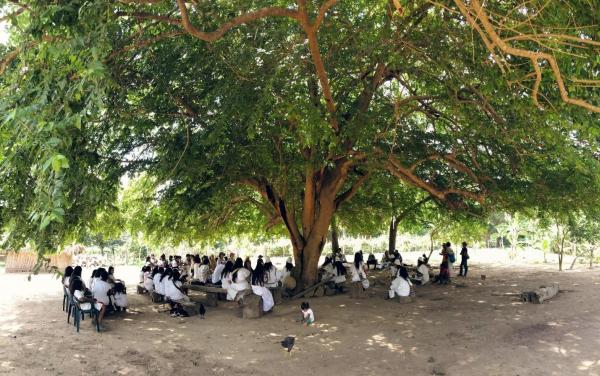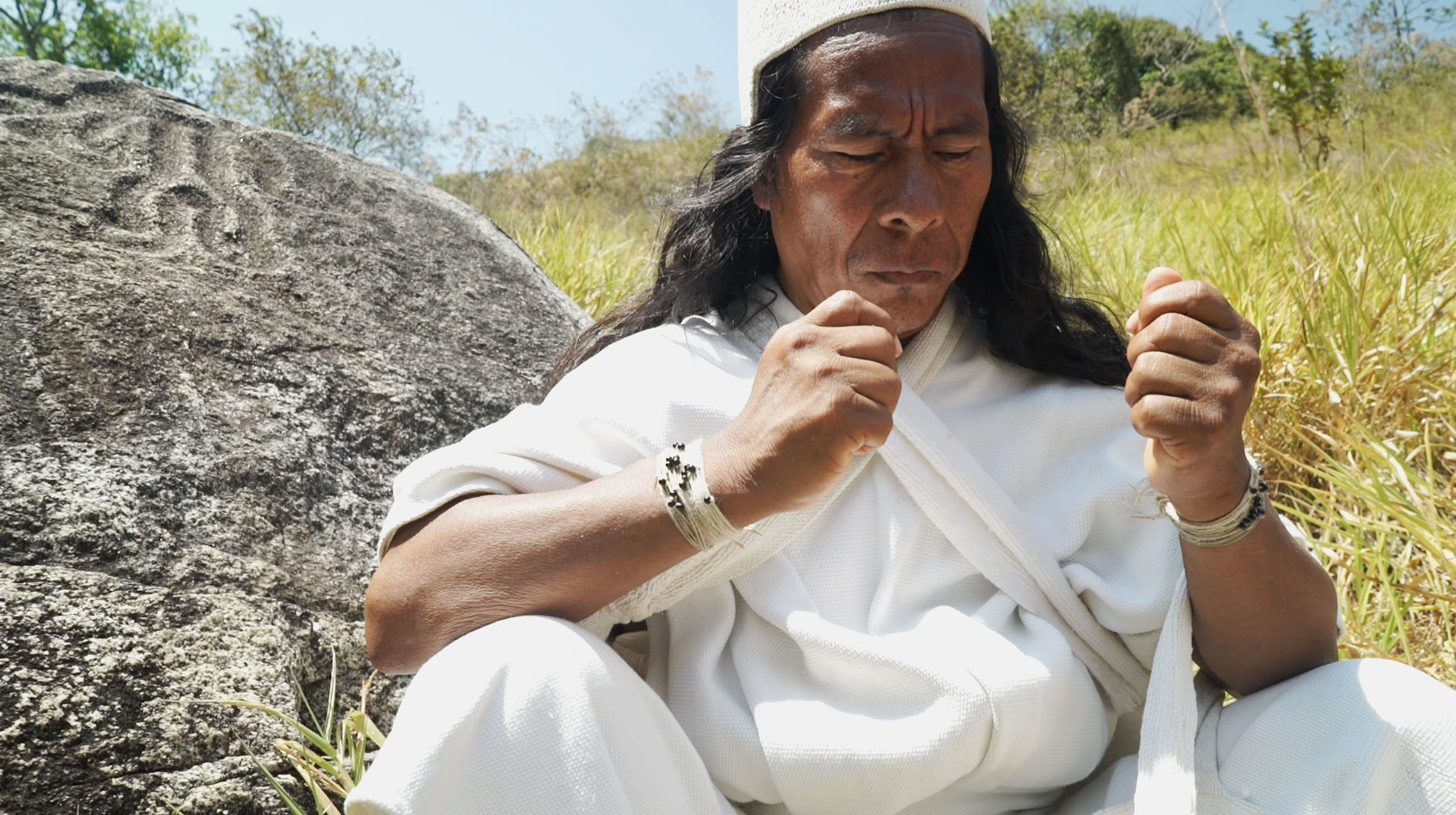This series of blogposts will provide a behind-the-scenes look at the process involved in planning a major exhibition on ancient Colombia—Portable Universe/El Universo en tus Manos: Thought and Splendor of Indigenous Colombia—opening at LACMA in the fall of 2021. For this particular exhibition, the focus is on the compelling need for more research and our collaboration with Indigenous people in Colombia.
Seeking out the Indigenous Perspective
Indigenous people in Colombia have often been excluded from formal discussions of the past, and how the Colombian past is represented has been largely determined by Western institutions. To break this, real collaboration, understanding, and openness is needed. By co-curating with Museo del Oro, LACMA was already working with Colombian peers, but both LACMA and Museo del Oro are Western institutions. We wanted to go further by not only soliciting the help of Indigenous communities in Colombia, but by creating true collaboration where the Indigenous communities were consulted as true experts of their worldview and could have input in the story of their past and its meaning.
Until about 10 years ago, it was nearly impossible to travel around much of Colombia due to the country’s political situation, but the region is now safe for tourism. We decided to focus on the Sierra Nevada de Santa Marta, home to four Indigenous communities that claim direct descent from the ancient Tairona culture (900–1600 CE); the Kogi, Arhuaco, Wiwa, and Kankuamo. It is the Arhuacos with whom we ended up working most closely. Building trust with their spiritual and political leaders required a sustained and genuine effort, and we are grateful to have had collaborators who helped to facilitate this process.
We first arrived in Santa Marta in March 2018 for our first meeting with Mamo Camilo and our interpreter Jaison. (A “mamo” is a spiritually trained leader of a community; he makes religious and political decisions and is generally seen as a learned person who guides the community spiritually, morally, and socially.) Their appearance at our hotel was striking. Arhuacos are instantly recognizable for the white traditional outfit they wear, complete with a white cap that symbolizes the snow-capped mountain peaks of the Sierra Nevada de Santa Marta that is their home. They identify, physically, with the Sierra, and in turn see the Sierra as a body, a being that needs to be cared for. Their consciousness of the relationship with their land and with the earth is deep, explicit, and constant. The world is an organism and everything is connected; what we do in one place affects what happens elsewhere—a remarkably relevant message given current global discussions about climate change.
Arhuaco men carry multiple mochilas (bags), which are crocheted by women, one containing coca leaves, one containing a poporo (container for lime powder, the catalyst needed for chewing coca), and sometimes additional mochilas containing whatever useful things one tends to carry around—that can even include a mobile phone. They speak their own language, Ika, but Jaison was not just excellent at translating the words of the mamo, but also the mamo’s messages and meanings in a way that we could understand—he was a translator of culture too.
Mamo Camilo had consulted with other mamos about us and our project and they agreed not only to take us to places that would be important for us to see if we were to learn about their culture, but also to allow us to film them. So, we bundled into a van and headed into (what was for us) the unknown.
After several hours driving on increasingly unpaved roads (and with a flat tire along the way), we eventually reached the Piedras Donama, a group of large rocks carved with intricate designs and figurative motifs. The main boulder was right by the dusty road, but there were several more rocks uphill behind it. I had never heard of the place, let alone seen a photo of it. It wasn’t mentioned in any of the books I had read about the ancient art and archaeology of Colombia. In academic terms, this place did not exist, but for the Arhuaco it was considered one of their most sacred ancestral sites, a place mapping out their story of origin, a place recording a time when all things were created. The extent to which Western scholarship had overlooked this place was baffling to me, but then again, the last 60 years or so had seen almost no outside research in the Colombian countryside.
Mamo Camilo talked for several hours, Jaison translated, we listened and filmed and allowed ourselves to be awed by the place. The carvings were remarkable; intricate, intertwined, multivalent, with new figures appearing and disappearing depending on what line your eyes followed. At one point we were given small strands of cotton to hold and to think over (think about who we were before we were [anything], who we were in our mothers' wombs, and who we are now), then Mamo Camilo collected the cotton, meditated over the pieces a while longer, and placed them as offerings under one of the boulders.
I have been to countless archaeological sites, but I had never seen one treated in such a way. The Arhuaco description of the carvings, too, was far richer than any academic interpretation would ever be, not that one exists. For us, “archaeological site” means something ancient with an ancient meaning, but it ignores the fact that many of these places continue to have immediate meaning and relevance for people today. The Arhuaco care deeply about the Piedras Donama and have an understanding of the carvings that they believe have been passed down through generations, which may well be the case. The explanation they gave is just as valid (if not more so) as that of any Western scholar with no ancestral links to the Sierra Nevada.
Petroglyphs are hard to date and the Piedras Domana have never been scientifically investigated so we do not know how old these carvings are. The few estimations I have found since our visit all guess that they are pre-Columbian, made sometime between 500 and 1600 CE. My general instinct would be to agree with that simply because that is the period in which this region was beginning to become more densely populated. These kinds of date ranges, however, are laughable to the Arhuacos, as I discovered when we spent the next day visiting the archaeological museum in Santa Marta with them.
Join us next week to find out what happened when we visited the archaeological museum with Mamo Camilo and Jaison, and consider how the Arhuaco worldview intersects with our understanding of ancient art objects.




